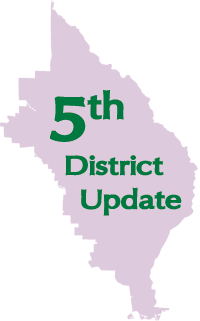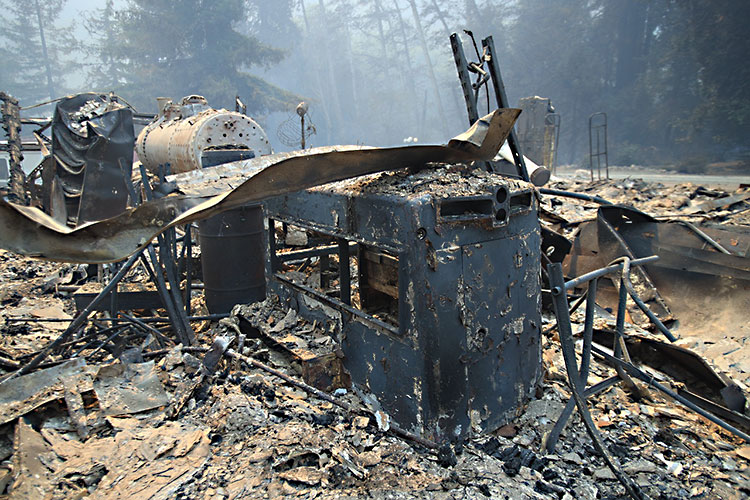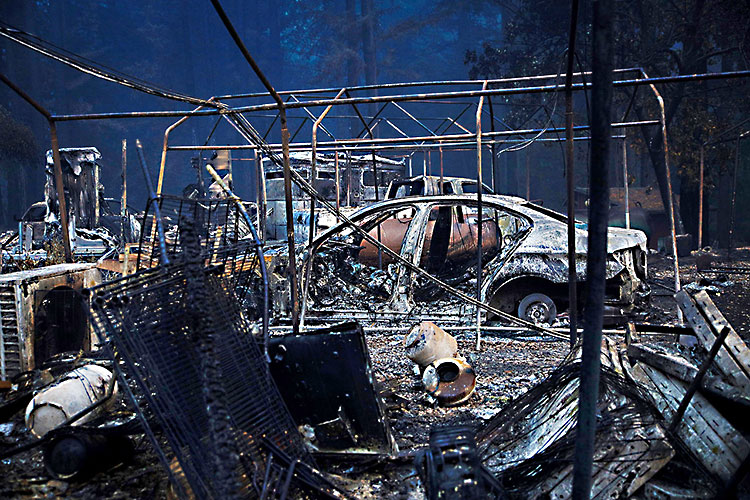Remove Debris, Then Be Alert for Mud Flows
Editor’s Note: On Sept. 29, the U.S. Environmental Protection Agency announced the start of field operations to assess and remove hazardous waste such as fuels, paints, cleaners, batteries, oils, herbicides and pesticides from more than 1,000 burned homes in Santa Cruz, Monterey, and San Mateo counties. Crews will begin in Santa Cruz County.
•••
Now that the devastating CZU Lightning Complex fire is 100 percent contained and evacuation orders have been lifted, our county is shifting its focus swiftly toward recovery and resiliency. We do so with those who lost their homes at the top of our minds and in our hearts.
 While the San Lorenzo Valley has certainly experienced its share of natural disasters, with the flood of 1982 and the earthquake of 1989 being the most recent, the magnitude of personal loss caused by the fires that started Aug. 16 and ended more than a month later is staggering.
While the San Lorenzo Valley has certainly experienced its share of natural disasters, with the flood of 1982 and the earthquake of 1989 being the most recent, the magnitude of personal loss caused by the fires that started Aug. 16 and ended more than a month later is staggering.
Once again, however, we have seen the community spring into action to help one another, like at the recent two-day event at the Boulder Creek Recreation District’s Bear Creek Community Center, where the Federal Emergency Management Agency (FEMA), County Environmental Health and Planning Departments, and other organizations gathered to help fire victims.
The role of county government from here on out will be multi-faceted and require a great deal of coordination with state and federal agencies. While we are laying the groundwork for rebuilding, we must first deal with the very immediate task of removing hazardous debris from destroyed properties, which is known in disaster-recovery terminology as Phase 1. That work, conducted by the U.S. Environmental Protection Agency at no cost to property owners, is slated to begin in the next week or so.
I am grateful for the coordination of the California Office of Emergency Services, FEMA, the Office of Congresswoman Anna Eshoo and the Office of Governor Gavin Newsom that led to receiving our federal disaster declaration and Phase 1 approval quickly.
 The next phase of recovery is the removal of non-hazardous debris, including fire ash, known as Phase 2. While we are awaiting word about funding, we fully expect there to be a publicly funded option for properties owners. They can also hire their own private contractor, though approval will be needed first from the County Environmental Health Department.
The next phase of recovery is the removal of non-hazardous debris, including fire ash, known as Phase 2. While we are awaiting word about funding, we fully expect there to be a publicly funded option for properties owners. They can also hire their own private contractor, though approval will be needed first from the County Environmental Health Department.
Updated information about both Phase 1 and 2 processes, as well as the future rebuilding plans, can be found on the County’s Fire Recovery site, santa cruzcounty.us/firerecovery. Rest assured that my office and that of Supervisor Ryan Coonerty’s, whose district was also severely impacted by the fire, will lead these recovery and resiliency efforts for the Board of Supervisors for the months and years to come.
The other primary issue we are working on is preparing for the likelihood of debris flows in the burn-scarred areas of the San Lorenzo Valley, Bonny Doon and North Coast as a result of flash rains that nearly always hit our county in the fall and winter months.
In an effort to avoid the kind of death and destruction experienced in Santa Barbara County in January 2018 when mudslides destroyed 425 structures and killed at least 21 people after the Thomas Fire in Montecito, Santa Cruz County is working diligently to map potential hazard areas, devise an evacuation strategy and message the importance of heeding evacuation warnings.
After wildfires tear through hillsides with heavy vegetation, as exists in the San Lorenzo Valley, there is a water-repellent, wax-like coating left on the ground that can turn downslopes into enormous slides during intense rains. These conditions can create flows of mud and other debris charging at up to 30 miles per hours, wiping out homes, vehicles and other things in their path.
State officials on the Watershed Emergency Response Team have conducted an initial study to determine the most hazardous areas. The report will be released in coming weeks and will be used to guide evacuation planning. Meanwhile, the County is laying the groundwork for geological analyses of properties to ensure where temporary structures can be safely allowed.



